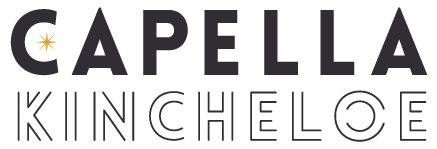Photographing Interior Design: Interview with Kat Alves
This week I am speaking with Kat Alves, a talented freelance interiors and architectural photographer for both commercial and residential spaces. I was first introduced to Kat when I did Amy Aswell's Real Designer feature since she photographs all of Amy's work.
Kat is a California native with a degree in Photography and Design Studies from San Francisco State University. She followed that up with a Certificate in Interior Design from UC Berkeley. So she knows a bit about photographing interiors. Her photography showcases modern, fresh design with natural light. Her work has been featured in numerous publications including Dwell Magazine and Luxury Home Magazine.
Below, Kat shares with us the inside scoop on working with a professional photographer:
What is the benefit of hiring a professional photographer to photograph interiors?
To make your project shine and be able to present your work to the world in its best light. Since most homes are private, it is very difficult for prospective clients and others to view all the hard work of interior design. Photos are the key to getting your work seen and noticed by others. Photos have the benefit of highlighting the best areas/details of the project and with the right point of view, masking any flaws or unhappy choices.
A professional interior photographer knows how to light the space and/or use natural light to showcase your work. They know how to find the best angles and interesting compositions to bring the space to live.
What is the best way to find an interiors photographer?
By keeping your eye on the pulse of your area and noticing the work of others and who is shooting it. Social media, especially Instagram is a good way. Houzz has a pro photographer section and has offered deals to new clients wanting to get their work photographed. Ask other designers or architects for photographer referrals. Do your research to find a good match. Here is a list of some great architectural / interiors photographers worldwide: http://photographyandarchitecture.com/
What should an interior designer look for when hiring a photographer?
Find a style of photography that you like and hire a photographer that shoots in that style. Make sure the work the photographer is currently doing is what you like and will match your style. Shooting interiors is a very niche area of photography and is very technical. Just because someone is an amazing wedding photographer does not mean they have the knowledge to shoot an interior space. A vertical wall must be vertical.
On a technical note: I shoot with a tethered iPad (connected to my camera). This allows the client to live-view the photos as I shoot. This way we can work together to style and create an image that we are both pleased with and there are no surprises.
Current professional camera equipment is a must.
What should you expect to spend on professional photos?
Photographer's rates vary. I think a typical interiors shoot can be $500 - $2000+ depending on location and size of the project. This includes time on location photographing and the post production work of editing the photos to perfection. Editing can often take longer than shooting the images. I like to remove all imperfections and unsightly things like outlets that do not enhance the design.
Some photographers will charge a flat rate and others will price the job per final photo delivered or any combo of the two. Basic licensing/ image usage is often included for the client. This does not extend to others, meaning that only the designer or client paying for the photos, will have the rights to use them, unless agreed upon by the photographer. (Read more about image copyright here)
How can an interior designer prepare the space for photoshoot day?
Simple and fresh styling is best. Everything looks different from the camera's angle, so be flexible to allow to arrange things according to the camera's point of view. Flowers (always fresh, never fake) are nice and objects of various sizes/textures work great for styling. Keep styling natural and casual, work with what you have. Remove personal clutter. Layer to create a story. Less is more. Let the homeowner know ahead of time that it will get messy during the shoot, but not to worry, it will all get put back into place.
Further Styling Reads:
Any advice on getting published?
The easier you make it for an editor the better, and having beautiful photos to pitch your project helps SO much. Write up a paragraph description of the project and outline the details, credits and/or product info. Send it directly to the magazine or editor that you think is a good fit, include a link to a photo gallery and cross your fingers. Good luck! (Editor's Note: Next week we have an interview with magazine editor on getting published! Stay tuned.)
Thanks Kat!
To get in touch with Kat Alves: website / instagram
Photo courtesy: Kat Alves Interior Design: Amy Aswell
Like this article? Share with a fellow designer. #collaborationovercompetition

